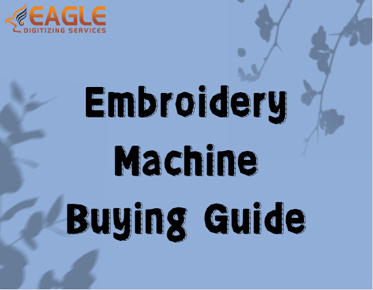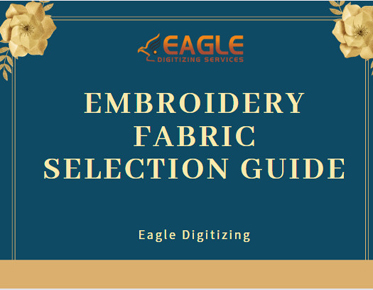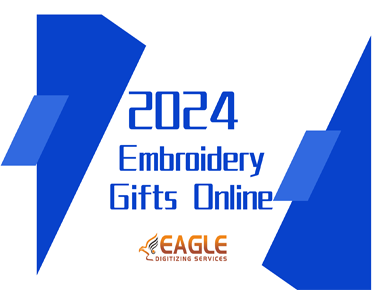Embroidery Machine Buying Guide: All You Need to Know
Embroidery machines are fascinating pieces of technology that have transformed the world of crafting and design. Whether you're a seasoned professional or a hobbyist just starting out, understanding the ins and outs of these machines is essential to making an informed purchase decision. In this comprehensive guide, we'll explore everything you need to know before investing in an embroidery machine.
Embroidery machines are specialized devices designed to automate the process of stitching intricate designs onto fabric. Unlike traditional hand embroidery, which requires manual stitching, embroidery machines use computerized technology to create precise and consistent patterns quickly and efficiently. These machines come in various sizes, configurations, and price points, making them accessible to a wide range of users.
1.
Single-Needle Machines
Single-needle machines, as the name suggests, utilize a solitary needle to create detailed embroidery designs on fabric. Their precision and versatility make them ideal for intricate projects.
● Features and Capabilities
Single-needle machines often boast
a wide range of features, including programmable stitch patterns, adjustable
tension settings, and compatibility with various embroidery file formats.
● Ideal Users and Applications
These machines are favored by beginners and experienced embroiderers alike, offering a perfect balance of simplicity and functionality. They excel in smaller-scale projects such as monogramming, appliqué, and delicate embellishments.
2.
Multi-Needle Machines
Multi-needle machines take efficiency to the next level by simultaneously using multiple needles, allowing for faster stitching and color changes without the need for manual rethreading.
● Features and Advantages
These machines
typically feature multiple needles, ranging from two to more than ten, enabling
them to tackle complex designs with ease. They often come equipped with
advanced features such as automatic thread trimming and color sequencing.
● Suitable Users and
Applications
Multi-needle machines are preferred by professional embroiderers and businesses that require high-volume production capabilities. They excel in larger projects such as quilting, garment embellishment, and intricate designs with multiple colors.
1.
Budget
● Setting a Realistic Budget
Before diving into
the world of embroidery machines, it's crucial to establish a budget that
aligns with your needs and expectations. Consider not only the initial purchase
cost but also ongoing expenses such as supplies and maintenance.
● Understanding Pricing Factors
Pricing for embroidery machines can vary significantly based on factors such as brand reputation, features, and build quality. While it may be tempting to opt for the cheapest option, investing in a higher-quality machine can yield better long-term results.
2.
Space and Size
● Assessing Available Space
Embroidery machines
come in various sizes, so it's essential to assess the available space in your
workspace before making a purchase. Consider factors such as machine
dimensions, clearance around the machine, and storage requirements.
● Considering Machine
Dimensions
Depending on your workspace limitations, you may need to prioritize compact machines or opt for larger models with expansive embroidery areas. Balance your space constraints with the machine's capabilities to ensure a comfortable and efficient working environment.
1.
Embroidery Area
● Importance of Embroidery
Field Size
The size of the
embroidery area dictates the maximum dimensions of your designs. Larger embroidery
areas offer more flexibility and accommodate larger projects, while smaller
areas are suitable for smaller-scale work.
● Choosing the Right Size for
Your Projects
Consider the types of projects you intend to undertake and select an embroidery machine with an appropriate embroidery area. It's essential to strike a balance between versatility and practicality to ensure optimal results.
2.
Built-in Designs and Fonts
● Evaluating Pre-Loaded Designs
Many embroidery
machines come with a selection of built-in designs and fonts, allowing you to
get started right away without the need for additional software. Evaluate the
quality and variety of pre-loaded designs to ensure they align with your
creative vision.
● Customization Options and
Flexibility
Look for machines that offer customization options, such as the ability to import and edit designs or create your own. Flexibility in design capabilities allows you to unleash your creativity and personalize your projects to your liking.
1.
Understanding Stitch Per Minute (SPM)
● Importance in Efficiency
Stitching speed,
measured in stitches per minute (SPM), directly impacts productivity and
turnaround time. Higher SPM rates enable faster completion of projects, making
them ideal for high-volume production environments.
● Balancing Speed and Precision
While faster stitching speeds can enhance efficiency, it's crucial to maintain precision and quality throughout the process. Look for machines that offer adjustable speed settings and advanced stitching mechanisms to achieve the perfect balance between speed and accuracy.
2.
Accuracy and Consistency
● Quality of Stitching Results
The quality of
stitching results is paramount in embroidery, as even minor inconsistencies can
detract from the finished product. Choose a machine known for its accuracy and
consistency, with features such as automatic tension adjustment and precise
needle placement.
● Factors Affecting Consistency
Factors such as thread tension, fabric type, and design complexity can influence the consistency of stitching results. Select a machine that provides ample control over these variables to ensure consistently impeccable outcomes across all your projects.
1.
Intuitive Controls and Navigation
● Importance for Beginners and
Advanced Users
An intuitive user
interface is essential for users of all skill levels, from beginners learning
the basics to experienced embroiderers seeking advanced features. Look for
machines with straightforward controls and user-friendly navigation menus.
● User-Friendly Features to
Look For
Consider additional features that enhance usability, such as on-screen tutorials, built-in help guides, and customizable shortcuts. These features streamline the embroidery process and empower users to unleash their creativity with ease.
2.
Display Screen
● Size and Clarity of Display
The display screen
serves as the command center of the embroidery machine, providing visual
feedback and access to various settings and functions. Opt for machines with
large, high-resolution displays for optimal visibility and ease of operation.
● Touchscreen vs.
Non-Touchscreen Options
While touchscreen interfaces offer intuitive navigation and tactile feedback, some users may prefer traditional button interfaces for their reliability and durability. Consider your personal preferences and workflow requirements when choosing between touchscreen and non-touchscreen options.
1.
Included Accessories
● Assessing Included Items
Evaluate the
accessories included with the embroidery machine, such as hoops, needles, and
embroidery thread. Comprehensive accessory packages can save you time and money
by providing everything you need to get started on your projects.
● Compatibility with Additional
Accessories
Consider the compatibility of the machine with additional accessories and attachments, such as specialty hoops, embroidery feet, and stabilizers. Compatibility ensures versatility and expands the range of projects you can undertake with your machine.
2.
Software Compatibility
● Compatibility with Design
Software
Check whether the
embroidery machine is compatible with popular design software programs,
allowing you to import and edit designs seamlessly. Compatibility with
industry-standard file formats such as .dst and .pes ensures compatibility with
a wide range of design files.
● Upgradability and Expansion
Options
Look for machines that offer upgradability and expansion options, such as firmware updates and compatibility with future software releases. Upgradable machines provide longevity and adaptability, allowing you to stay current with the latest advancements in embroidery technology.
1.
Cleaning and Maintenance Requirements
● Regular Cleaning Procedures
Proper maintenance
is essential to ensure the longevity and performance of your embroidery
machine. Follow manufacturer guidelines for regular cleaning procedures,
including removing lint and debris from the bobbin area, oiling moving parts,
and checking for any signs of wear or damage.
● Long-Term Maintenance Tips
In addition to routine cleaning, implement long-term maintenance practices to keep your machine in optimal condition. This may include periodic professional servicing, storing the machine in a dust-free environment, and replacing worn components as needed to prevent potential issues down the line.
2.
Durability and Warranty
● Evaluating Build Quality
Durability is a
crucial factor to consider when investing in an embroidery machine, as it
directly impacts its lifespan and reliability. Look for machines constructed
from high-quality materials and backed by reputable brands known for their
craftsmanship and attention to detail.
● Understanding Warranty
Coverage
Review the warranty coverage provided by the manufacturer to understand your rights and responsibilities in the event of a malfunction or defect. Pay attention to warranty duration, coverage limitations, and any conditions that may void the warranty, such as improper maintenance or unauthorized repairs.
1.
Researching Customer Reviews
● Importance of Real-World
Experiences and Identifying Reliable Sources
Customer reviews offer valuable insights into the performance, reliability, and user experience of embroidery machines. Look for reviews from verified purchasers and reputable sources to ensure the information is trustworthy and unbiased.
2.
Seeking Recommendations
● Consulting Fellow
Embroiderers and Professional Recommendations and Reviews
Reach out to fellow embroiderers, sewing enthusiasts, and professionals in the industry for recommendations based on their firsthand experiences. Their insights can help you narrow down your options and make an informed decision that aligns with your specific needs and preferences.
1.
Assessing Future Needs
● Anticipating Growth in Skills
and Projects
Consider your long-term
goals and aspirations as an embroiderer, including any plans to expand your
skills and tackle more ambitious projects. Choose a machine that can grow with
you, offering advanced features and capabilities to support your evolving
creative journey.
● Considering Future Technology
Advancements
Stay abreast of emerging technologies and advancements in embroidery machine technology to anticipate future developments and trends. Select a machine that embraces innovation and offers opportunities for future upgrades and enhancements to stay ahead of the curve.
2.
Upgradability Options
Look for embroidery machines with modular designs and compatibility with aftermarket accessories and upgrades. This allows you to customize and enhance your machine over time, adapting to new techniques, software advancements, and industry standards without the need for a complete replacement.
Look for embroidery machines that provide access to a range of training materials, resources, and educational content to help you learn how to use the machine effectively.
1.
Availability of Training Materials
Check whether the manufacturer provides comprehensive training materials, such as user manuals, video tutorials, and online forums, to help you get started with your embroidery machine. Access to educational resources is invaluable, especially for beginners looking to master new techniques and workflows.
2.
Customer Support Services
Evaluate the quality and responsiveness of the manufacturer's customer support services, including technical assistance, warranty support, and troubleshooting guidance. Prompt and knowledgeable customer support can save you time and frustration when encountering issues or questions during your embroidery journey.
In conclusion, purchasing an embroidery
machine is an investment in your creativity, productivity, and artistic
expression. By considering factors such as machine type, budget, space
requirements, key features, maintenance needs, and future expansion options,
you can make an informed decision that aligns with your goals and aspirations
as an embroiderer. Remember to research thoroughly, seek recommendations from
trusted sources, and prioritize ease of use, performance, and support when selecting
the perfect embroidery machine for your needs. With the right machine by your
side, you'll unlock endless possibilities for crafting beautiful, personalized
designs that delight and inspire. Happy stitching! If this post spurred your interest and you want to find out more about Embroidery Digitizing, please feel free to contact us.



